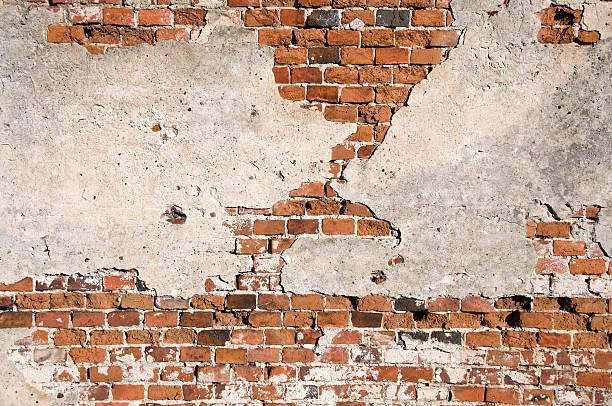
In the upscale desert community of Rio Verde, Arizona, a home’s exterior is more than just a design choice—it’s a protective barrier against the elements and a reflection of your property’s long-term value. When it comes to siding materials, two favorites often come into focus: stucco and brick.
Both offer strength, curb appeal, and insulation, but they respond differently to Rio Verde’s desert climate and lifestyle demands. Whether you’re building a new custom home or renovating your current exterior, understanding the strengths and limitations of each can help you make the right decision.
Key Takeaways
Stucco is versatile, cost-effective, and ideal for desert climates.
Brick provides unmatched durability and a timeless aesthetic, but at a higher cost.
Local climate, maintenance needs, and aesthetic goals should guide your material choice.
Professional installation is essential for both options to ensure longevity and performance.
Why Stucco Stands Out in Rio Verde
Stucco is practically synonymous with the Southwest. It’s composed of cement, sand, and lime, creating a breathable yet durable surface that’s well-suited for Arizona’s dry heat and sudden storms. Once sealed properly, stucco resists cracking, fading, and water damage—especially important in communities like Rio Verde, where extreme heat and occasional monsoons are common.
Stucco also allows for a wide range of textures and finishes. Whether you prefer a smooth, contemporary look or a traditional Santa Fe texture, stucco adapts easily to your architectural vision. Its natural thermal mass helps insulate homes, keeping interiors cooler during the hot season and reducing HVAC load.
To learn more about how we apply stucco systems in Arizona homes, visit our stucco installation services.
Where Brick Holds Its Own
Brick offers one major advantage: longevity. A properly installed brick façade can last for generations with little maintenance. It’s also incredibly fire-resistant, pest-proof, and immune to rot or fading. For homeowners who prioritize permanence and traditional charm, brick may be worth the higher investment.
However, that durability comes at a cost—literally. Brick is significantly more expensive to install and requires a reinforced foundation due to its weight. In Rio Verde, where expansive soils and seismic activity can affect structural movement, brick must be installed with extra care to avoid cracking or settling.
According to The Brick Industry Association, while brick excels in durability, it lacks the flexibility and design range of modern stucco.
Energy Efficiency and Performance
Stucco tends to outperform brick in terms of insulation efficiency in hot, dry climates. Brick’s density holds heat longer, which can be a disadvantage during long Arizona summers. While brick provides better protection in colder climates due to its thermal mass, stucco reflects heat more effectively—keeping Rio Verde homes cooler and energy bills lower.
As Energy.gov explains, exterior materials play a critical role in regulating indoor temperatures, and stucco often leads in high-heat zones.
Maintenance: Stucco vs. Brick
Stucco does require occasional upkeep—especially sealing—to prevent cracks and stains from moisture or dust. But when maintained properly, it offers decades of performance. We’ve covered discoloration and sealing in depth in our South Phoenix blog post—a must-read if you’re seeing signs of fading or surface wear.
Brick, while generally low-maintenance, can face issues with mortar deterioration over time. Repointing brick joints and addressing foundation shifts can be expensive and labor-intensive. In Rio Verde’s shifting desert soil, those maintenance costs may add up faster than expected.
Cost Considerations in Rio Verde
Initial installation costs for stucco are generally 30–50% less than brick, depending on home size and design complexity. This affordability, combined with its energy efficiency and visual appeal, makes stucco a go-to choice for many homeowners across Maricopa County.
Want to see how our team helps homeowners weigh cost vs. value? Take a look at our Gilbert, AZ service area for real-world examples and regional recommendations.
Architectural Compatibility
Rio Verde is known for its mix of Spanish, ranch, and Southwestern contemporary homes. Stucco complements each of these styles naturally. While brick may suit more traditional or colonial-inspired designs, it can appear out of place in the softer, earth-toned palettes of the desert.
For homes near golf courses or elevated terrain, stucco’s ability to blend into natural surroundings while offering crisp, modern lines makes it the more versatile choice.
Curious how climate affects your exterior design? This Old House offers great insight on regional materials and architectural compatibility.
Which Material Wins in Rio Verde?
There’s no one-size-fits-all answer. But for most homes in Rio Verde, stucco offers a better balance of affordability, performance, and aesthetic flexibility. Brick remains an excellent option for long-term durability and resale value—provided the budget allows for it.
At Stucco Contractors Arizona, we’ve helped countless homeowners across Rio Verde choose the right siding for their goals. Whether you’re updating a classic desert home or building from the ground up, our team brings precision, product knowledge, and regional insight to every project.
Call today or visit Stucco Contractors Arizona to explore siding options and schedule a free consultation. Let’s give your home the exterior it deserves—built to last, designed to impress.
